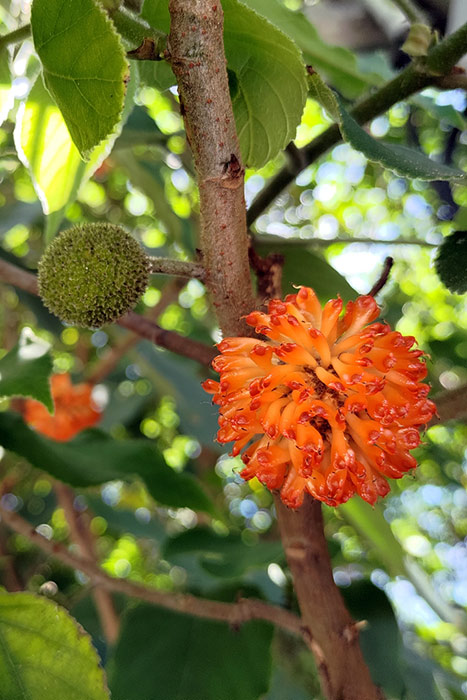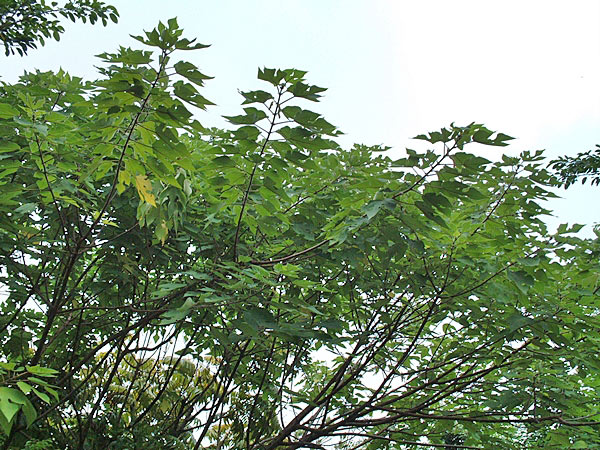Broussonetia papyrifera
The paper mulberry is a common plant in Taiwan's low altitude areas and can be found in the Botanical Garden and garden area of the museum. When the fruits are ripe, they smell very sweet and are edible. In addition, the orange-red ripe fruits hanging on the tree are often visited by birds. Many butterflies are attracted to the ripe fruits falling to the ground in the Botanical Garden to suck the sweet juice, which proves that not all butterflies are nectar suckers, and that the juice of the ripe fruits actually attracts many butterflies as well. As for its branches and leaves, many deer-breeding families in the past would deliberately go to the wild to collect them to feed their captive deer at home, so it is also known as the “deer tree” among the people in Taiwan.
The genus name Broussonetia is in honor of Pierre Marie Auguste Broussonet (1761-1807), a French physician and naturalist, from whom the surname is derived, and the species name papyrifera means paper-making. Its English name, paper mulberry, also emphasizes its special function of making paper. The part of the tree that can be used to make paper is its long and tough bark fiber, which is the best material for making cotton paper, so many paper craft workshops will plant a few nearby to let people know about this plant. Fibers of the paper mulberry are used in some countries to maker papers for printing banknotes.
In addition to making paper, the bark of the paper mulberry is the raw material for the bark cloth of the Austronesians. This plant is dioecious, and studies have shown that the trees in Oceania are almost female, and the trees in these areas should have originated in Taiwan, thus proving that the Austronesians may have migrated out from Taiwan.

